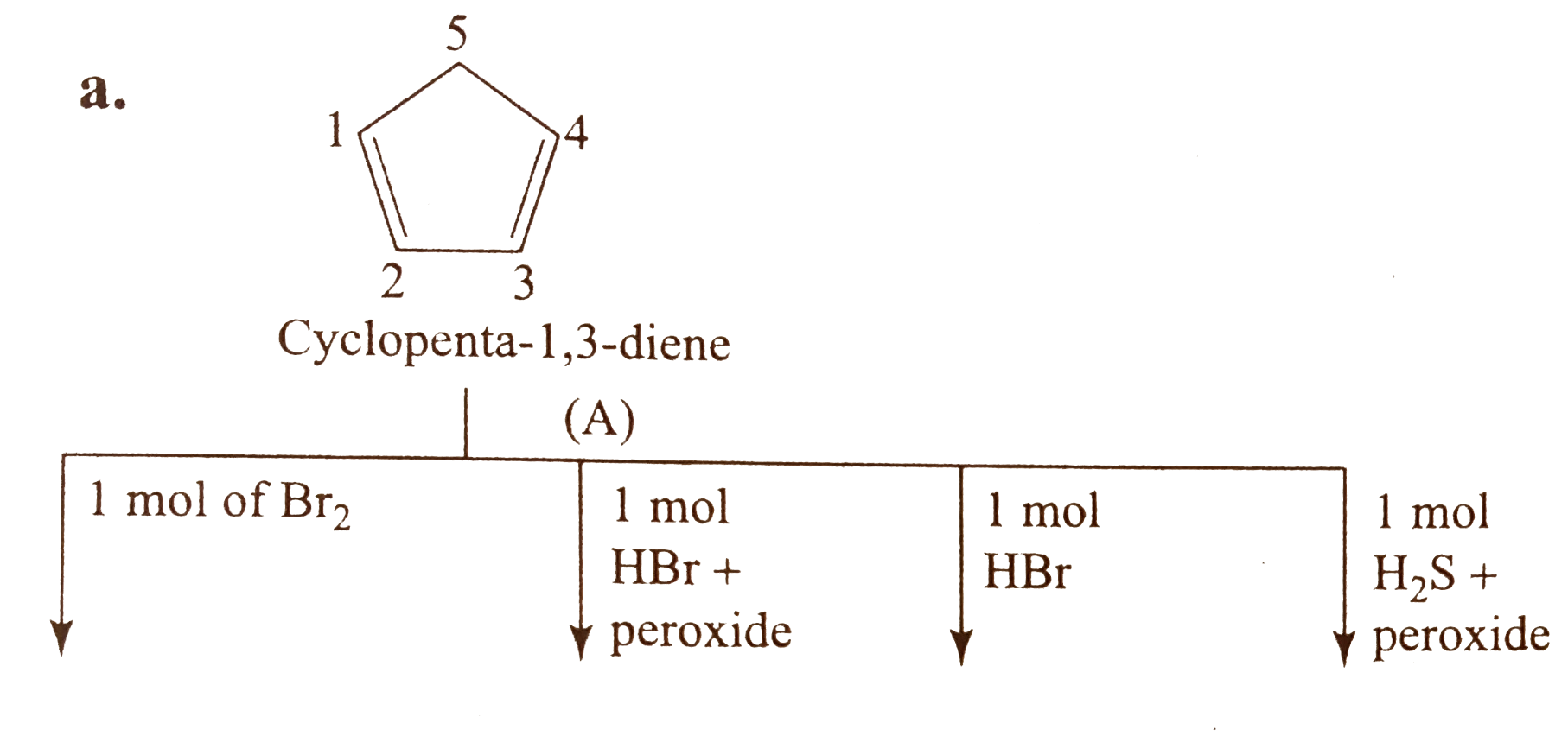Give the products with their stereoisomers, if any.
a. 
b. 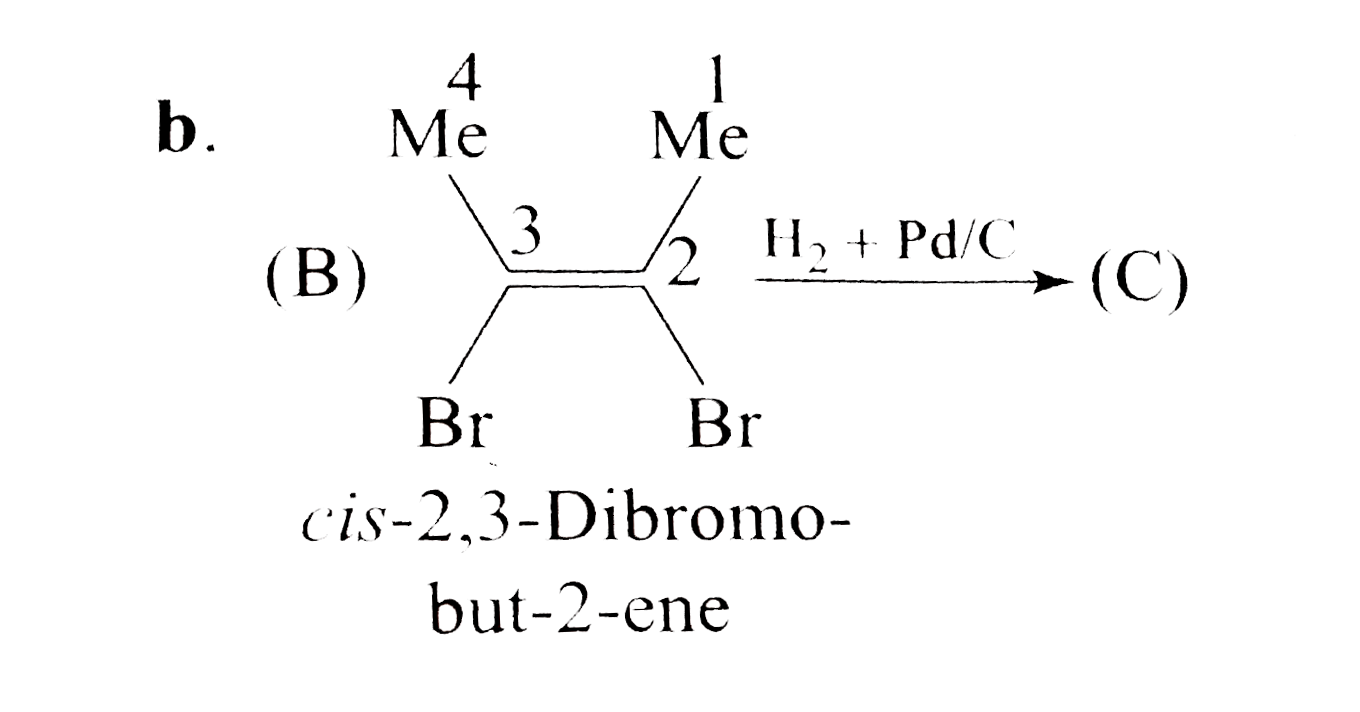
c. 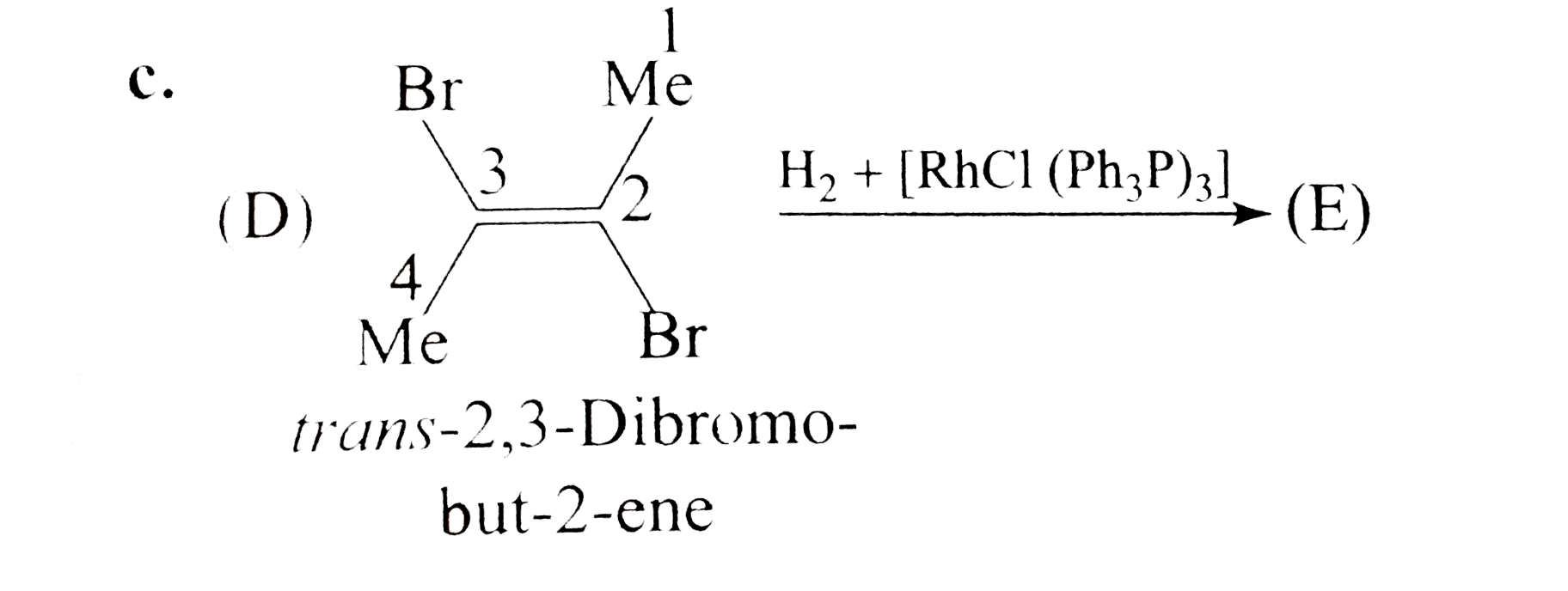
Video Solution
Text Solution
a. 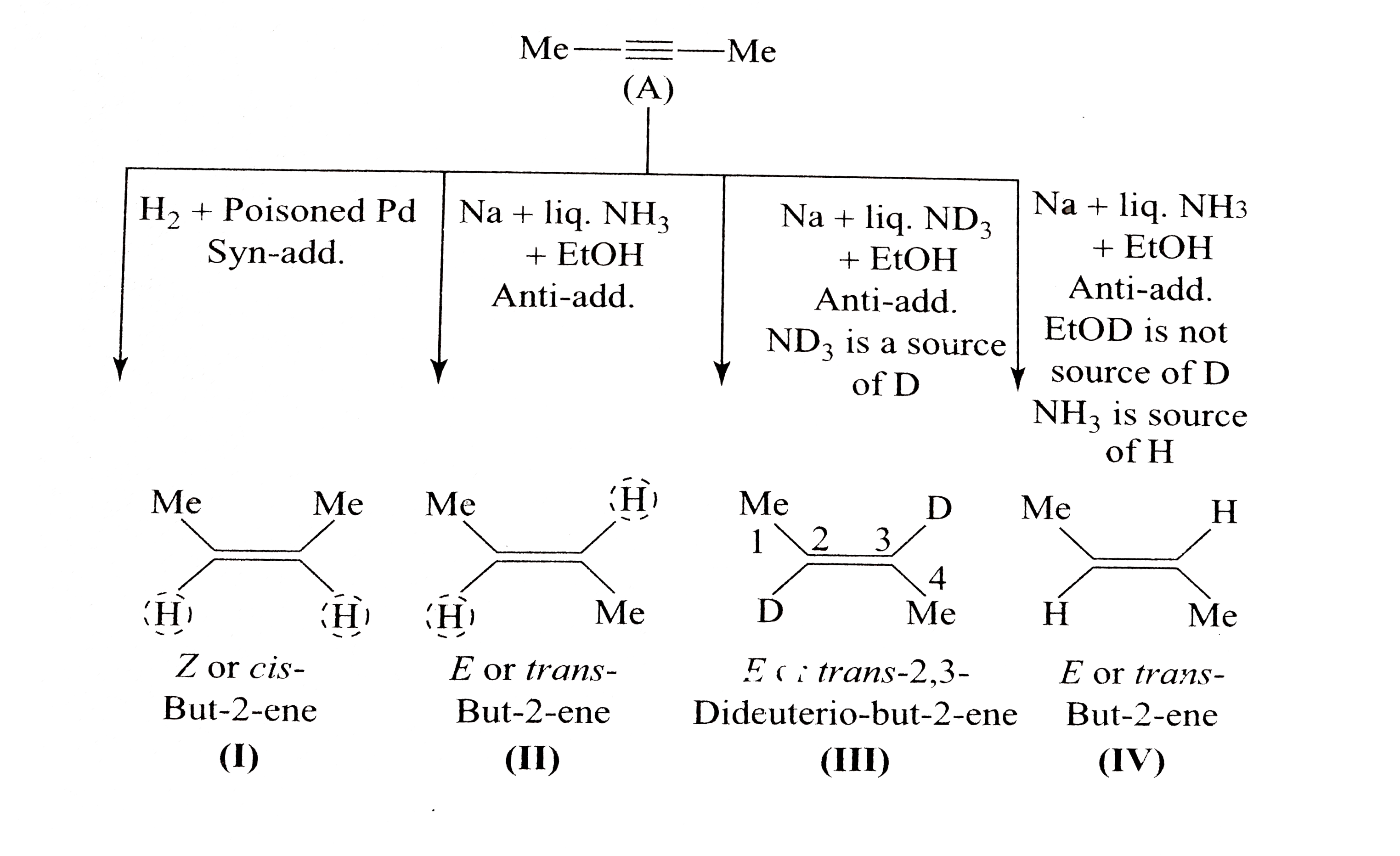
b. Note: Metal +H2 does not reduce (R−X) to (R−H) but reduces (Ar−X) to (Ar−H).
Reactant is cis + mechanism of addition is syn → product is meso.

c. Reactant is trans + mechanism of addition is syn → product is dl or (±) racemic.

d. Reactant is cis + mechanism of addition is syn → product is meso.

Meso−1,2−dymethyl cyclohexane (O.I.A.)
e. Reactant with two different groups + mechanism of addition is syn → product is dl or (±) or racemic.
 dl−2,3− Dibromopentane
dl−2,3− Dibromopentane
f. Reactant is cis with two different groups + mechanism of addiciton is syn → product id dl or (±) or racemic.
 dl−2,3−Dibromopentane
dl−2,3−Dibromopentane
g. Reactant is cis + meachanism of addition is syn → product is meso.

h. Reactant is trans + mechanism of addition is syn → product is (±) or dl or racemic.
 dl−2,3−Dideutereo− butane
dl−2,3−Dideutereo− butane
i. Reactant cis or trans ( with different groups )+ mechanism of addiction is syn → Product is always (±) or dl or racemic.

As there are two different groups in the alkene, the plane of symmetry is not attained. So the product is never obtained in meso from but optical isomers d and l are obtained from cis − or trans − alkene.
j. 
Both reactions are catalytic hydrogenation. Reation (1) is heterogenous catalytic hydrogenation in which the solid catalyst is in a different phase from the reactant (A)( gas phase ). Reaction (2) is homogenous cataytic hydrogenation because the reactant and the catalyst are in the same gaseous phase.
|
Topper's Solved these Questions
- ALKENES AND ALKADIENESBOOK - CENGAGE CHEMISTRY ENGLISHCHAPTER - ALKENES AND ALKADIENESEXERCISE - SOLVED Example
62 Videos
- ALKENES AND ALKADIENESBOOK - CENGAGE CHEMISTRY ENGLISHCHAPTER - ALKENES AND ALKADIENESEXERCISE - EXERCISES
29 Videos
- ALKANES AND CYCLOALKANESBOOK - CENGAGE CHEMISTRY ENGLISHCHAPTER - ALKANES AND CYCLOALKANESEXERCISE - Archives
13 Videos
- ALKYNESBOOK - CENGAGE CHEMISTRY ENGLISHCHAPTER - ALKYNESEXERCISE - Exercises (Archives - Analytical and Desriptive Type)
4 Videos
Similar Questions
Knowledge Check
Under the specified conditions, substrate X undergoes substitution and elimination reactions to give products A-D. A and Bare stereoisomers, but not enantiomers. C and D are enantiomers. A is notanisomer of C. Which of the following could be the starting material X?
XH2O−−→ΔA+B+C+D
 A(I)B(II)C(III)D(IV)
A(I)B(II)C(III)D(IV)
The following stereoisomers are
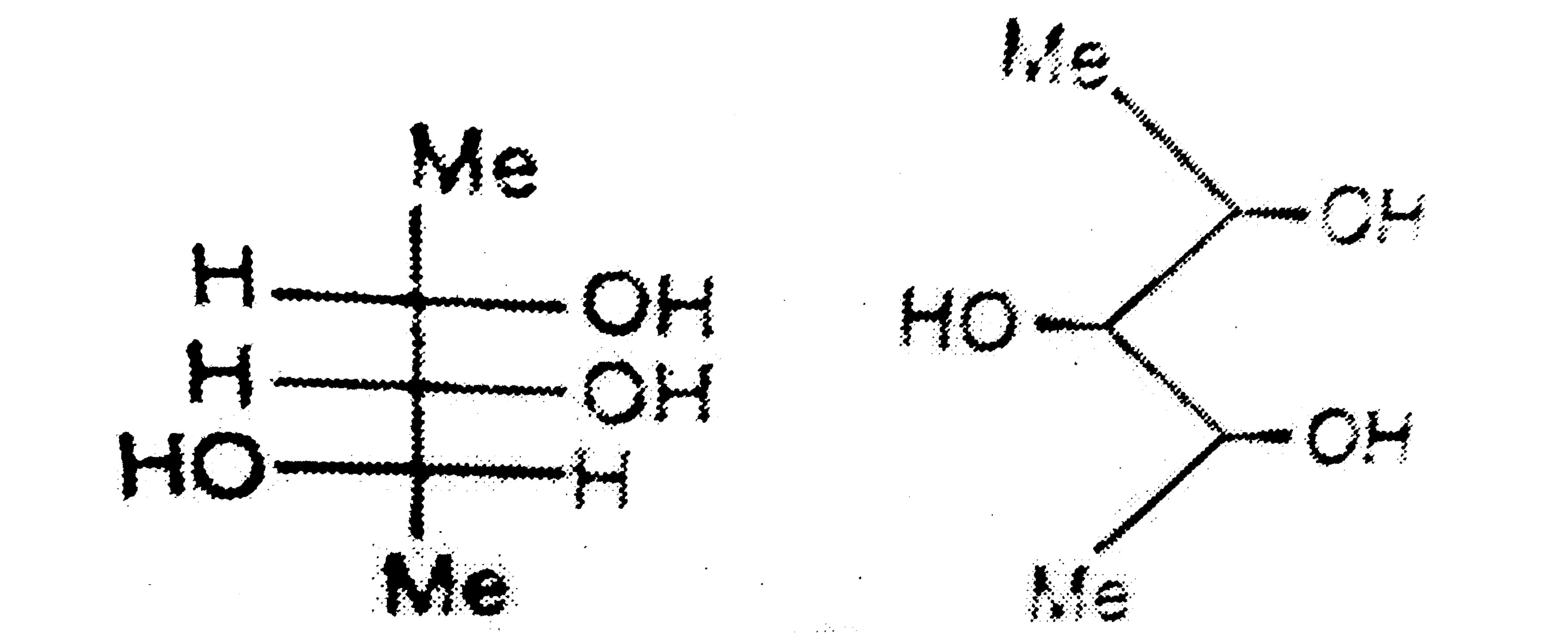
View Solution
Give the products (B) and (C) in the above reaction.
View SolutionGive the products of the reaction with conc. H2SO4 of :
a.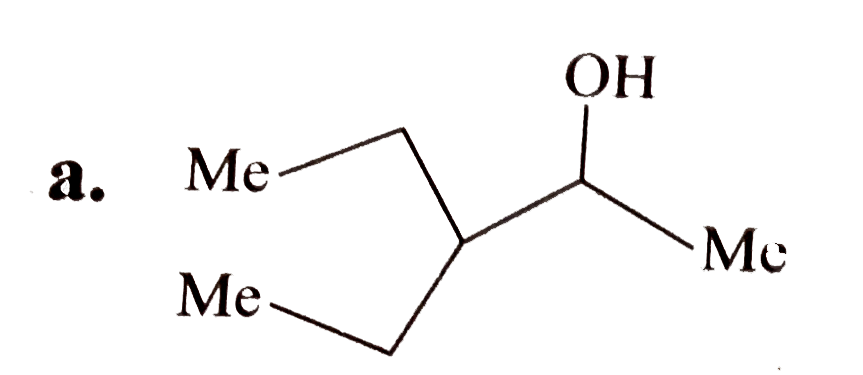
b.
c.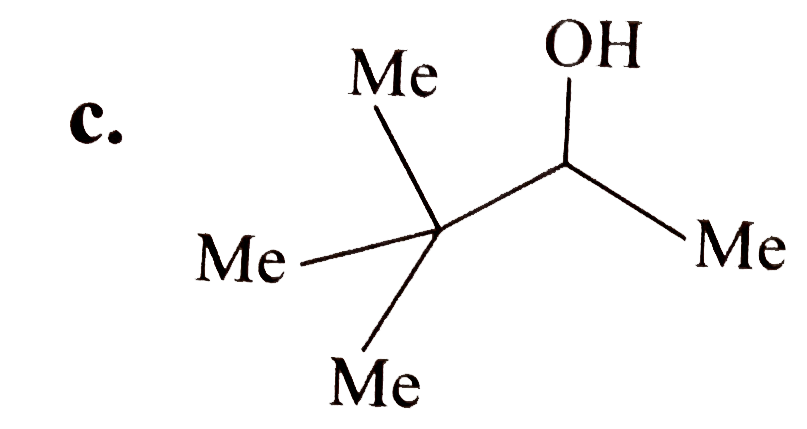
d. 1- Methyl cyclohexanol
View SolutionA hydrocarbon of melecular formula C5H10 on monochlorination gives one product and on dichlorination gives three products (excluding stereoisomers) . Identify the hydrocarbon .
View SolutionGive the sterochemical products of the following :
a.
b.
c.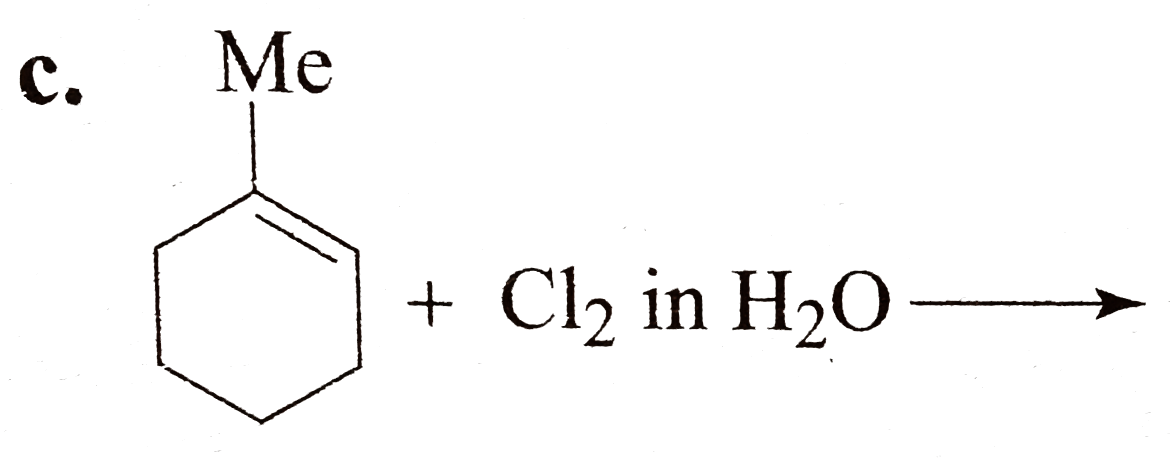
View SolutionGive the products of the reaction of styrene oxide with
(a) NaSH
(b) LiAID4
( c) MeOH/H+
( d) HBr(1eq)
View SolutionGive all the structural isomers ( excloding stereoisomers and allenes ) of diene with the molecular formula C6H10.
View Solution

